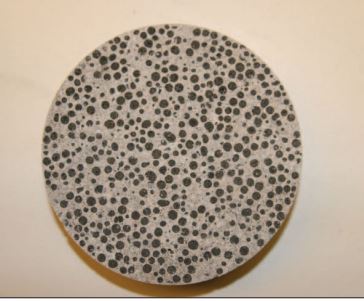Concrete is a mixture of coarse aggregate, fine aggregate, cement, some admixtures and water. Since the aggregate is obtained from hard rocks, their density or specific gravity is almost the same. So, the density of normal concrete is generally 22 to 26 kN/cubic meter.
The density of concrete can be reduced by replacing some of the solid materials in the mix by air voids. This can be achieved in three ways:
The air can be in
- Aggregates
- Cement Paste
- Between the coarse particles.
When air is present in aggregates, the resulting concrete is lightweight aggregate concrete.
When air is introduced in cement paste, the resulting concrete is known as Foam Concrete or Cellular Concrete.
When air is in between the coarse aggregates, it means fine aggregates are not used in the concrete and the resulting concrete is known as No-fines concrete.
Classification of Lightweight Concrete
The density of lightweight concrete is between 300 to 1850 kg/cubic meter. The density and strength of concrete are correlated. It is sensible to classify it based on density.
Low-Density Concrete
- Density: 300-800 kg/cubic meter
- It is used mainly for non-structural purposes such as thermal insulation.
Structural Lightweight Concrete
- Density: 1350-1850 kg/cubic meter
- This concrete is used for structural purposes i.e. for bearing loads.
- It has a minimum compressive strength of 17 MPa.
In between these two, there is a moderate strength concrete (7-17 MPa) who thermal insulation characteristics are also in between those of low-density concrete and structural lightweight concrete.
Advantages of Lightweight Concrete
The high density of normal concrete results in the high deadweight of concrete members. By using low-density concrete, we can reduce the dead weight of the structure. Thus-
- Elements of the smaller cross-section will be required.
- Formwork will have to bear lower pressure.
- When the total mass of materials to be handled is reduced, the productivity of labourers and machinery is increased.
- Lower density concrete gives better thermal insulation.
Disadvantages of Lightweight Concrete
Lightweight concrete has higher cement content than normal concrete. So it becomes costly.
We can save the cost in reduced size of structural members and footings. Thus it becomes a cost-effective alternative.


